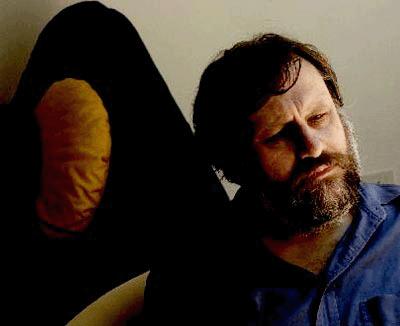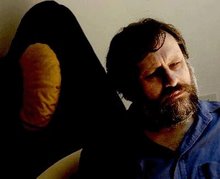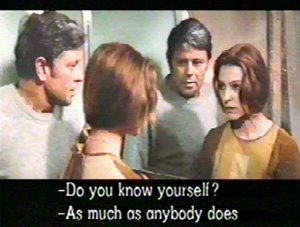[1]
for a list of bolagrams on file, see this index
A bolagram ("BOundary LAnguage diaGRAM") is a diagram-aide for parsing the complex, "Möbius strip-like" relationships that characterize spatial, psychological, architectural, cultural, narrative, and artistic relationships. The key to making a bolagram is, first, finding Möbius-like structures and "anamorphic" elements within the site to be diagrammed.
Why do we need a "boundary language"? Boundaries themselves constitute a means of communication, so why is a notation system that can only approximate this communication helpful? People move around well without the help of geographers, think without the help of philosophers and psychologists, eat without the assistance of nutritionists. The "professionals" who study the details and causes behind the various aspects of human life are not there so much to help us as they are to understand, in terms as comprehensive and inclusive as possible, what being human means and how being human works. In particular, they want to know why humans are different from other animals, and a large part of the answer to this question involves humans' ability to use systems of substitutions. Words, ideas, tokens, and marks continually operate as if they were real things, but their value is their portability, their "currency," that frees us from having to have literal things in front of us constantly. Boundary language looks in particular at these symbolic exchanges and studies them in terms that often seem literary or psychologistic.

To construct a bolagram . . .
The bolagram is useful only inasmuch as it clarifies ambiguities where existing conventional terms "almost" meet the demands of knowledge. The bolagram provides a means of deciphering the "twist" or "flip" function that structures events, places, and objects in ways that cannot be represented by Euclidean relationships. This, bolagramming stays very close to existing theory, dealing mainly with issues of inconsistency, self-reference, and recursion. It is a model of the "fractal logic" that, in almost all of the human sciences, pervades every situation and theory.
Consider what relationships are structured by symbolic relationships between a source of authenticity or authority (A) and the participating subject (C). These are mediated by signifiers that may be objects, laws, customs, intentions, expectations, representations, spaces, or events. This "line" of influence works primarily to limit the free movement ("motility") of the subject, to restrict or place the subject within the network of signifiers and significations. The logic that pervades these relationships is "transitive" in the sense that the rule of "ordinary logic" prevail. The law of the excluded middle - something can be EITHER true or false but not both; the law of self-identity (A=A), and the spaces and times that guarantee the operation of a stable, rational world.
The elements C' and a ("petit a" or "little other /autre") are "surplus" to the main symbolic network. Thus, whatever operates as a surplus in a given situation may be a part of this region. The subject exploits this surplus by creating a special counterpart, a fictive subject that corresponds to the main subject's "victimization" by symbolic authority (thus, a "fictim"). The fictim, C', takes up a special viewpoint and is able to view the element B "anamorphically," awry, anamorphically.
The intended view and the anamorphic view structure B as an oscillating square wave phenomenon (ij), which has the curious effect of BOTH undermining and reinforcing the symbolic authority of the Big Other (A). The anamorphic view is the gateway to the "objet petit a" (Lacan's "object-cause of desire," the "little other") which has the power to re-frame a scene "from the inside." Little 'a' is also known as "the inside frame."
Little 'a' is the inside which becomes the outside, inverting the spatial, temporal, and other "scale" relationships stabilized by representations of reality. Thus, we say that the object-cause of desire provides access to "The Real." This is manifest most clearly in the little-a's ability to re-address the identity of Big-A through a function of semblance or recognition. This re-connection of the surplus to the origin is always, as Lacan puts it, a "return of the repressed." Reverse order, metonymy, and inversion are all characteristics of this return.
bolamaps and bolagrams
There are two main outcomes of boundary language: (1) the ability to identify elements of the landscape, works of art, architecture, etc. in their roles of mediating the use of structured space and time - the "bolamap" - and (2) the ability to model these same phenomena as a sequence of hypothetical "events" that relate the subject to the world in various ways - the "bolagram."
The bolamap applies graphic notation to the external world, the bolagram is like the atomic structure of things reduced to a set sequence of relationships. Every bolamap has its bolagram, and vice versa.
The conventions of boundary language have been borrowed from sources that are more comprensive and widely accepted than the new and relatively unknown boundary language. This is not to appeal to the authority of the sources used, but to provide the boundary language user with connections that can be documented and tested in a more public way. The primary source of terms for the bolagram is the French psychologist Jacques Lacan, whose interpretation of Freud enabled his interpreters - in particular the Slovenian sociologist Slavoj Zizek - to apply relatively complex ideas to examples from everyday life and popular culture. This may seem to over-psychologize boundary behavior, but Lacan's psychology is already "given over" to taking psychology out of the clinic and classroom and into the real world. A psychological perspective is appropriate because boundaries would not be boundaries if "subjects" (human beings) were not subjects. The particular way the human being is a "subject" in the world has a lot to do with the way humans create and use boundaries in ways starkly different from animals.
In addition to the psychology of Lacan, examples from antiquity are helpful because, as artifacts that have been around for a long time, they suggest patterns of thought and behavior that are able to transcend time and culture.
______________________________________________________________________________________



